
(a)
Interpretation:
Structural formula has to be drawn for a secondary arylamine with molecular formula
Concept introduction:
In chemistry Structure is the arrangement of
Depending on the number of carbon side chain of the amide, different types of amides can form.

If nitrogen atom of amine group is attached only to alkyl groups, then it is an aliphatic amine.
If nitrogen atom of amine group is attached to at least one aryl groups, then it is an
If nitrogen atom of amine group is a part of an aromatic ring, then it is a heterocyclic aromatic amine.
If nitrogen atom of amine group is a part of a ring, then it is a heterocyclic amine.
(a)
Explanation of Solution
Given molecular formula is
The compound is secondary amine so the nitrogen of amine group should be bonded with two carbon containing groups. Also this nitrogen atom must attach to an aryl group.
Therefore,
Structural formula of a secondary arylamine with molecular formula
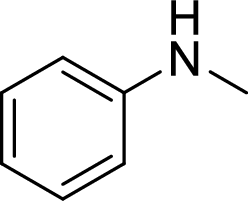
(b)
Interpretation:
Structural formula has to be drawn for a tertiary arylamine with molecular formula
Concept introduction:
In chemistry Structure is the arrangement of chemical bonds between atoms in a molecule, specifically which atoms are chemically bonded to what other atoms with what kind of chemical bond.
Amines are the derivatives of ammonia
Depending on the number of carbon side chain of the amide, different types of amides can form.

If nitrogen atom of amine group is attached only to alkyl groups, then it is an aliphatic amine.
If nitrogen atom of amine group is attached to at least one aryl groups, then it is an aromatic amine.
If nitrogen atom of amine group is a part of an aromatic ring, then it is a heterocyclic aromatic amine.
If nitrogen atom of amine group is a part of a ring, then it is a heterocyclic amine.
(b)
Explanation of Solution
Given molecular formula is
The compound is secondary amine so the nitrogen of amine group should be bonded with three carbon containing groups. Also this nitrogen atom must attach to an aryl group.
Therefore,
Structural formula of a tertiary arylamine with molecular formula
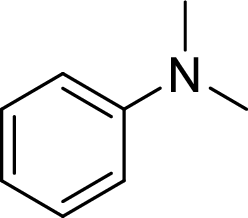
(c)
Interpretation:
Structural formula has to be drawn for a primary aliphatic amine with molecular formula
Concept introduction:
In chemistry Structure is the arrangement of chemical bonds between atoms in a molecule, specifically which atoms are chemically bonded to what other atoms with what kind of chemical bond.
Amines are the derivatives of ammonia
Depending on the number of carbon side chain of the amide, different types of amides can form.

If nitrogen atom of amine group is attached only to alkyl groups, then it is an aliphatic amine.
If nitrogen atom of amine group is attached to at least one aryl groups, then it is an aromatic amine.
If nitrogen atom of amine group is a part of an aromatic ring, then it is a heterocyclic aromatic amine.
If nitrogen atom of amine group is a part of a ring, then it is a heterocyclic amine.
(c)
Explanation of Solution
Given molecular formula is
The compound is primary amine so the nitrogen of amine group should be bonded with only one carbon containing group. Also this nitrogen atom must attach to an alkyl group.
Therefore,
Structural formula of a primary aliphatic amine with molecular formula
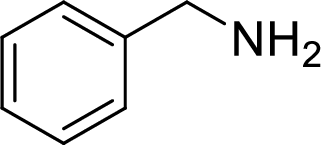
(d)
Interpretation:
Structural formula has to be drawn for a chiral primary amine with molecular formula
Concept introduction:
In chemistry Structure is the arrangement of chemical bonds between atoms in a molecule, specifically which atoms are chemically bonded to what other atoms with what kind of chemical bond.
Amines are the derivatives of ammonia
Depending on the number of carbon side chain of the amide, different types of amides can form.

Chiral carbon: A carbon is said to be chiral carbon if it is bonded to four different substituents.
If nitrogen atom of amine group is attached only to alkyl groups, then it is an aliphatic amine.
If nitrogen atom of amine group is attached to at least one aryl groups, then it is an aromatic amine.
If nitrogen atom of amine group is a part of an aromatic ring, then it is a heterocyclic aromatic amine.
If nitrogen atom of amine group is a part of a ring, then it is a heterocyclic amine.
(d)
Explanation of Solution
Given molecular formula is
The compound is primary amine so the nitrogen of amine group should be bonded with only one carbon containing group. Since the compound is chiral, one carbon atom should be bonded with four different groups.
Therefore,
Structural formula of a chiral primary amine with molecular formula
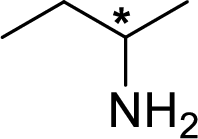
Chiral carbon is labelled with asterisk (*) as above.
(e)
Interpretation:
Structural formula has to be drawn for a tertiary heterocyclic amine with molecular formula
Concept introduction:
In chemistry Structure is the arrangement of chemical bonds between atoms in a molecule, specifically which atoms are chemically bonded to what other atoms with what kind of chemical bond.
Amines are the derivatives of ammonia
Depending on the number of carbon side chain of the amide, different types of amides can form.

If nitrogen atom of amine group is attached only to alkyl groups, then it is an aliphatic amine.
If nitrogen atom of amine group is attached to at least one aryl groups, then it is an aromatic amine.
If nitrogen atom of amine group is a part of an aromatic ring, then it is a heterocyclic aromatic amine.
If nitrogen atom of amine group is a part of a ring, then it is a heterocyclic amine.
(e)
Explanation of Solution
Given molecular formula is
The compound is secondary amine so the nitrogen of amine group should be bonded with three carbon containing groups. Also this nitrogen atom must be one of the atoms of the ring since the compound is a heterocyclic amine.
Therefore,
Structural formula of a tertiary heterocyclic amine with molecular formula
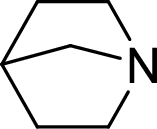
(f)
Interpretation:
Structural formula has to be drawn for a trisubstituted primary arylamine with molecular formula
Concept introduction:
In chemistry Structure is the arrangement of chemical bonds between atoms in a molecule, specifically which atoms are chemically bonded to what other atoms with what kind of chemical bond.
Amines are the derivatives of ammonia
Depending on the number of carbon side chain of the amide, different types of amides can form.

If nitrogen atom of amine group is attached only to alkyl groups, then it is an aliphatic amine.
If nitrogen atom of amine group is attached to at least one aryl groups, then it is an aromatic amine.
If nitrogen atom of amine group is a part of an aromatic ring, then it is a heterocyclic aromatic amine.
If nitrogen atom of amine group is a part of a ring, then it is a heterocyclic amine.
(f)
Explanation of Solution
Given molecular formula is
The compound is primary amine so the nitrogen of amine group should be bonded with only one carbon containing group. Also this nitrogen atom must attach to an aryl group that has three substituents.
Therefore,
Structural formula of a trisubstituted primary arylamine with molecular formula
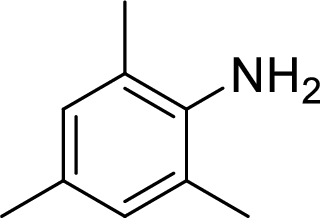
(g)
Interpretation:
Structural formula has to be drawn for a chiral quaternary ammonium salt with molecular formula
Concept introduction:
In chemistry Structure is the arrangement of chemical bonds between atoms in a molecule, specifically which atoms are chemically bonded to what other atoms with what kind of chemical bond.
Amines are the derivatives of ammonia
Depending on the number of carbon side chain of the amide, different types of amides can form.

Chirality: It refers to an atom in a molecule that contains four different substituents.
If nitrogen atom in amine group is attached with four atoms or group of atoms then the compound can be named as the salt of the corresponding amine (quaternary ammonium salt).
(g)
Explanation of Solution
Given molecular formula is
The compound is quaternary ammonium salt so the nitrogen of amine group should be bonded with group of atoms. Since the compound is chiral, the four groups attached to this nitrogen should be different.
Therefore,
Structural formula of a chiral quaternary ammonium salt with molecular formula
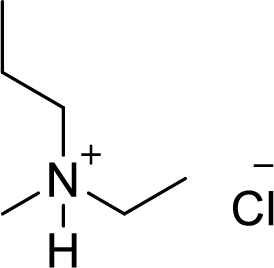
Chiral atom is labelled with asterisk (*) as above.
Want to see more full solutions like this?
Chapter 23 Solutions
Organic Chemistry, Loose-leaf Version
- く Check the box under each a amino acid. If there are no a amino acids at all, check the "none of them" box under the table. Note for advanced students: don't assume every amino acid shown must be found in nature. COO H3N-C-H CH2 HO CH3 NH3 O CH3-CH CH2 OH Onone of them Explanation Check + H3N O 0. O OH + NH3 CH2 CH3-CH H2N C-COOH H O HIC + C=O H3N-C-O CH3- - CH CH2 OH Х 2025 McGraw Hill LLC. All Rights Reserved. Terms of Use | Privacy Center Accesarrow_forwardWrite the systematic name of each organic molecule: structure HO-C-CH2-CH3 O -OH CH3-CH2-CH2-CH2-CH2-C-OH CH3 CH3-CH-CH2-C-OH Explanation Check S namearrow_forwardtheres 2 productsarrow_forward
- Draw the major product of this solvolysis reaction. Ignore any inorganic byproducts. + CH3CH2OH Drawing Q Atoms, Bonds and Rings OCH2CH3 || OEt Charges OH 00-> | Undo Reset | Br Remove Done Drag To Pan +arrow_forwardDraw the major product of this SN1 reaction. Ignore any inorganic byproducts. CH3CO2Na CH3CO2H Drawing + Br Q Atoms, Bonds and Rings OAC Charges OH ОАс Na ဂ Br Undo Reset Remove Done Drag To Pan +arrow_forwardOrganic Functional Groups entifying positions labeled with Greek letters in acids and derivatives 1/5 ssible, replace an H atom on the a carbon of the molecule in the drawing area with a ce an H atom on the ẞ carbon with a hydroxyl group substituent. ne of the substituents can't be added for any reason, just don't add it. If neither substi er the drawing area. O H OH Oneither substituent can be added. Check D 1 Accessibility ado na witharrow_forward
- Differentiate between electrophilic and nucleophilic groups. Give examples.arrow_forwardAn aldehyde/ketone plus an alcohol gives a hemiacetal, and an excess of alcohol gives an acetal. The reaction is an equilibrium; in aldehydes, it's shifted to the right and in ketones, to the left. Explain.arrow_forwardDraw a Haworth projection or a common cyclic form of this monosaccharide: H- -OH H- OH H- -OH CH₂OHarrow_forward
- Answer the question in the first photoarrow_forwardGgggffg2258555426855 please don't use AI Calculate the positions at which the probability of a particle in a one-dimensional box is maximum if the particle is in the fifth energy level and in the eighth energy level.arrow_forwardExplain the concepts of hemiacetal and acetal.arrow_forward
 Organic ChemistryChemistryISBN:9781305580350Author:William H. Brown, Brent L. Iverson, Eric Anslyn, Christopher S. FootePublisher:Cengage Learning
Organic ChemistryChemistryISBN:9781305580350Author:William H. Brown, Brent L. Iverson, Eric Anslyn, Christopher S. FootePublisher:Cengage Learning Introductory Chemistry: An Active Learning Approa...ChemistryISBN:9781305079250Author:Mark S. Cracolice, Ed PetersPublisher:Cengage Learning
Introductory Chemistry: An Active Learning Approa...ChemistryISBN:9781305079250Author:Mark S. Cracolice, Ed PetersPublisher:Cengage Learning Chemistry & Chemical ReactivityChemistryISBN:9781337399074Author:John C. Kotz, Paul M. Treichel, John Townsend, David TreichelPublisher:Cengage Learning
Chemistry & Chemical ReactivityChemistryISBN:9781337399074Author:John C. Kotz, Paul M. Treichel, John Townsend, David TreichelPublisher:Cengage Learning Chemistry & Chemical ReactivityChemistryISBN:9781133949640Author:John C. Kotz, Paul M. Treichel, John Townsend, David TreichelPublisher:Cengage Learning
Chemistry & Chemical ReactivityChemistryISBN:9781133949640Author:John C. Kotz, Paul M. Treichel, John Townsend, David TreichelPublisher:Cengage Learning Chemistry for Today: General, Organic, and Bioche...ChemistryISBN:9781305960060Author:Spencer L. Seager, Michael R. Slabaugh, Maren S. HansenPublisher:Cengage Learning
Chemistry for Today: General, Organic, and Bioche...ChemistryISBN:9781305960060Author:Spencer L. Seager, Michael R. Slabaugh, Maren S. HansenPublisher:Cengage Learning




